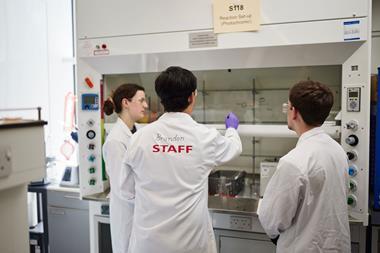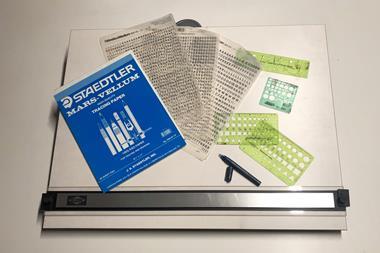Readers share concerns over classifying ethanol as reprotoxic, celebrate undergraduate practical innovation, and more
The prospective classification of ethanol
The article on the proposed classification of ethanol as reprotoxic raises questions again over outcomes of reviews under the EU classification, labelling and packaging (CLP) regulation 1272/2008 (see also the letter on its application to tea-tree oil).
The current proposal for the classification of ethanol has emerged from the biocides review programme, but a carcinogenic, mutagenic or reprotoxic (CMR) classification would have severe-to-catastrophic impacts on all uses of ethanol, from printing and cleaning through to cosmetics and sustainable fuels. Even the hospitality sector would be affected, because of the amount of health and safety legislation linked to the CLP regulation, even though alcoholic beverages themselves are exempt.
As pointed out, the problem arises because the classification system is hazard based. This would be OK if there were boundaries, which there are for all non-CMR hazards, such as acute toxicity, where there is a dose above which effects are not considered to warrant a hazard. This is not the case for the CMR end points where there is no such upper boundary with the result, in the case of ethanol, of epidemiology drinking studies being unscientifically extrapolated to infer hazards from completely different scenarios than those they assessed. The case of ethanol does bring into focus whether the criteria are fit for purpose having already ‘caught’ other high-profile substances such as titanium dioxide and silver.
It is highly likely, that if the process initiates at the European Chemicals Agency risk assessment committee, the classification of ethanol could emerge as a known human carcinogen, mutagen and reproductive toxin, catapulting it to the top of the list as one of the most hazardous substances to humans. This would bring zero (and likely negative) health benefits while risking the credibility of the system with the general public.
Jeff Kelsey FRSC
Chemsage
Practical innovation
It was pleasing to read an article showing the innovations that are happening in the teaching of undergraduate chemistry practicals. The Royal Society of Chemistry’s accreditation process recognises not only the necessity for training undergraduates to be safe, enquiring, problem solvers in the lab but also the need for chemistry teaching to evolve in order to reflect the changing nature of employer requirements for graduate chemical scientists. The Committee for Accreditation celebrates innovation in teaching and assessment. It is encouraging to read an article that demonstrates how universities are making changes and improvements to their chemistry courses. All the UK departments mentioned within the article have accredited chemistry degree courses, demonstrating how innovation can be achieved in synergy with accreditation.
Zoë Waller CChem FRSC
Chair, Committee for Accreditation and Validation, Royal Society of Chemistry
Breaking boundaries with machine learning
Derek Lowe says that machine learning can reveal knowledge ‘hidden too subtly for us to grasp’. True, but did our intellects fail us or do the community structures in science fail us?
Universities are divided into departments, sometimes isolated as cost-centres, and we fill in the gaps in our own subjects rather than broadening our understanding in the way that John Henry Newman encouraged as a far back as 1852 in The Idea of a University. Even within each subject there are silos. An example, and one where machine learning could play a part, is materials property prediction. All properties are related to composition, processing and structure at multiple levels but each scientist focuses on one set of properties: optical, magnetic or electrical. Yet the properties of materials should be related one to another as are refractive index and dielectric constant in electronic polarisation but with more complex correlations.
One of the strengths of machine learning is that it doesn’t care about scientific tribalism, cost centres or identity. It can roam while we insist on staying at home.
Julian Evans MRSC
London, UK
Continued longevity
Reading the article by Ian Shaw, ‘Do chemists die young?’, brought back memories. During the early 1990s I was working in a kilolab production laboratory in the north of England and was discussing with Royal Society of Chemistry member colleagues how we read Chemistry in Britain (as Chemistry World was then). We generally agreed we always read it back to front mostly due to the location of the jobs pages. One co-worker mentioned he always read the obituaries first as he found it heartening to see how long fellow chemists lived. At least now this seemingly rather morbid fascination has been justified through academic research!
Adrian Ford
Via email
Ian Shaw’s article is a welcome reminder that the profession of chemistry trends towards longevity. It echoes an article, ‘The not so grim reaper’, which appeared in Chemistry in Britain or one of its forbear publications several decades ago, and possibly before the fusion of the Chemical Society with the Royal Institute of Chemistry. That article came to a similar conclusion based on data culled from the annual salary surveys. I am very pleased to see that the trend continues into the 21st century.
Chris Newall FRSC
Via email
Take a break
Victoria Atkinson in her praise of coffee breaks is in good company: Peter Day – in his time a fellow of St John’s College, Oxford and director of both the Institut Laue-Langevin in France and the UK’s Royal Institution – wrote of the importance of what he called conversation rooms in his book Nature Not Mocked in the exchange of ideas and expertise. He concludes: ‘Trying out partly formed ideas or voicing uncertainties lubricates the path to innovation.’
Denis Cruse MRSC
Via email












No comments yet